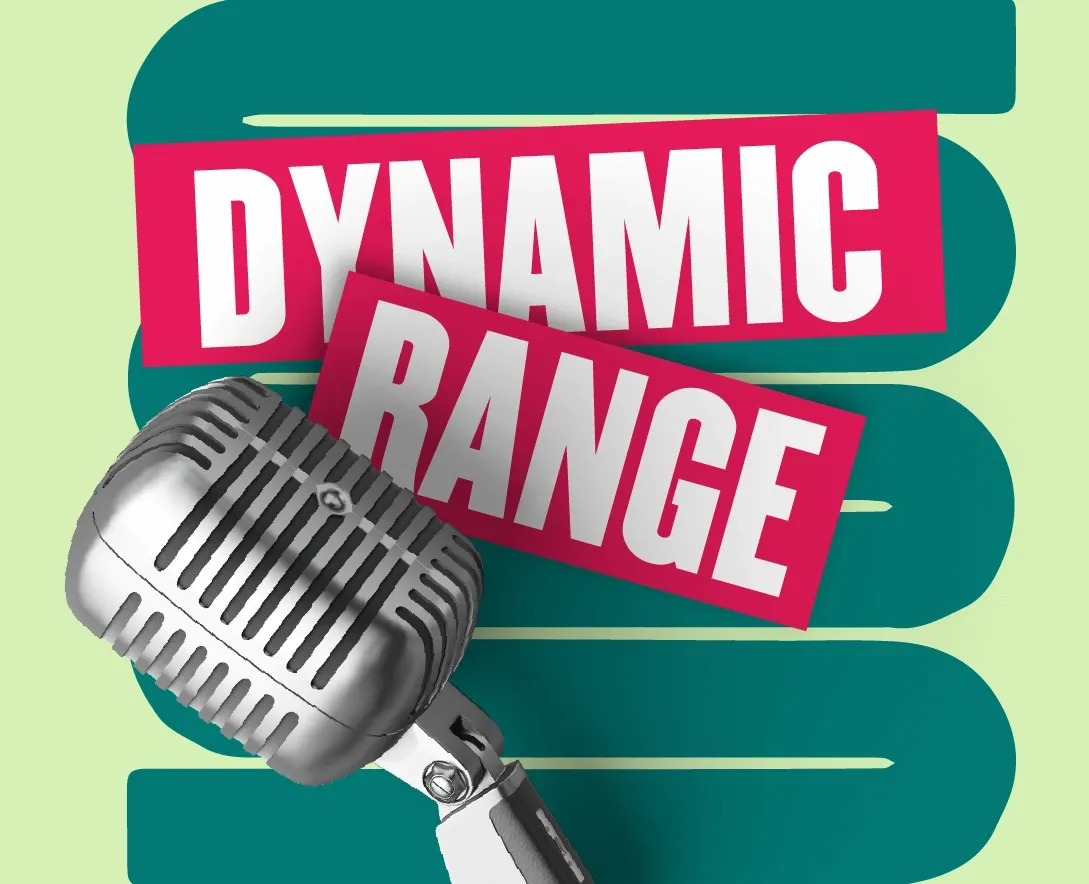Have you ever felt frustrated with adjusting the volume of your TV at night every few minutes, scene after scene? Sometimes it’s either you can’t hear anything, or you’re cautious not to wake anyone up from their sweet sleep (seriously, don’t!). At these moments, you wish the loudest and the softest parts of the audio track in the movie were not too far off from each other. So how about your podcast? It can be jarring for your listeners if it’s not consistent in volume.
Dynamic range in Audio is an essential factor to consider when producing audio content, and understanding it will help you produce consistent volume and avoid distortion. Indeed, it can be tricky to master, but it’s important to get it right if you want your listeners to stick around.
What is Dynamic Range?
First, let’s understand the dynamic range. Dynamic range is the difference between the softest and loudest passages of your audio recording and is expressed in decibels (dB). For a better picture, a healthy hearing person’s auditory system can perceive sounds from around 30 dB to 120 dB (do the math, and the dynamic range is about 90 dB). A whisper is about 30 dB, normal speech is 60-70 dB, and a jet engine from 100 feet away is about 120 dB.
Anything above that approximate limit, referred to as the peak level, would be hard for our auditory system to accommodate, which may distort our hearing, make us experience pain, and even cause hearing damage. On the other hand, the quietest ground is called the noise floor. Thus, dynamic range is the range of sounds between the noise floor and the peak level.
Dynamic Range for Audio Gear
Quite similarly, audio equipment that can reproduce sounds also has a dynamic range, in which case it is the ratio of the loudest and softest sounds that a device can produce. If the sound goes above the threshold of audio gear, it will distort due to a struggle to represent it. Indeed, one of the biggest challenges in professional audio production is to prevent distortion, which occurs when an audio signal is too loud for a device to reproduce accurately. When this happens, the waveform becomes clipped, and you can hear artifacts or strange sounds.
How Loud Should Your Podcast Be?
You might be wondering, what does all this have to do with your podcast. You may not be a musician or a music producer after all. However, understanding and considering dynamic range is just as crucial for making a successful podcast as planning the content itself and practicing the delivery and flow. If your voice in the audio is too loud or too quiet on one track, it may frustrate your listeners, which you most definitely want to avoid.
So, how can you make sure your podcast audio has a consistent dynamic range and is enjoyable to listen to?
Consider Your Audience
What devices do your listeners use to catch up with your weekly episode? If you’re Joe Rogan, the range of such audio gear may be too broad. In general, however, depending on your content, it may be possible to narrow it down to a few devices. Also, is that a late-night talk or something that people would enjoy listening to while on their way to work? For example, loudness can compensate the high-traffic noise but might be annoying with a tumbler of evening whiskey. All in all, the loudness should be consistent on all levels, and your listener should never adjust their volume unless, of course, it’s independent of your work.
Do The Editing
Luckily for you, modern software, such as Podcastle, offers many features to make your audio sound great, including automatic noise reduction, equalization, and more. You can also manually adjust the levels of your recording until it sounds just right. But if you prefer to be professionally fancy, you can take one of the dedicated courses in The Podcast Academy or outsource the production on Fiverr. The goal is one - make sure you’ve worked on it and figure out the right range.
Consider the Noise Floor and the Peak Level while Recording
Again, the recording may contain soft background noise or sound loud when you’re very eager to discuss a certain point. While editing, you can fix and keep the dynamic range close (not too close, however) so that all the unnecessary sounds are removed, and no distortion or clipping is caused. But it is also equally important to make the surrounding environment and the tone of your voice fitting so that the process is soft and smooth.
Conclusion
Podcasting is a great way to reach out to your audience and share your knowledge or stories. But if the sound quality is poor, you run the risk of driving people away before they’ve even had a chance to hear what you have to say. By understanding and using a dynamic range in audio, you can produce content that sounds consistent in volume and avoid distortion noises. It takes some practice to get it right, but with a bit of effort, you can create podcasts that are both enjoyable and easy on the ears.






